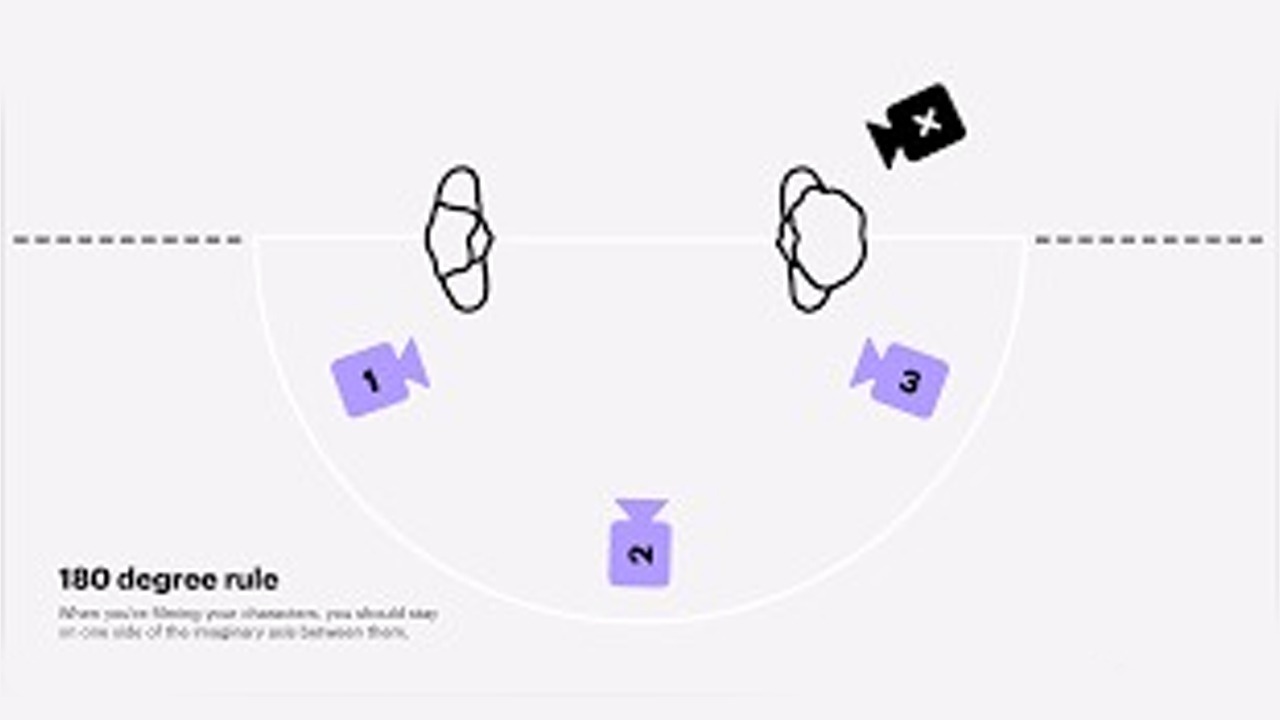In the world of filmmaking, maintaining continuity is crucial for creating a seamless and immersive viewing experience. One of the fundamental rules in achieving this continuity is the 180-degree line, also known as the "axis of action." Crossing this line without jarring the audience's perception of spatial relationships between characters and objects can be a challenging task. However, with careful planning and the use of specific techniques, filmmakers can successfully cross the 180-degree line without breaking continuity. In this article, we will explore several effective methods for achieving this essential aspect of visual storytelling.
1. Moving Camera on Shot:
Utilizing a moving camera to cross the 180-degree line is a popular technique that allows for a seamless transition while maintaining spatial continuity. By carefully planning camera movements, such as a tracking shot or a dolly movement, filmmakers can smoothly transition from one side of the line to the other without disorienting the audience. This technique is particularly effective in dynamic scenes where the camera's motion complements the action on screen, providing a natural and unobtrusive transition across the 180-degree line.
2. Moving Characters on Shot:
Incorporating the movement of characters within the frame is another effective method for crossing the 180-degree line without disrupting continuity. By choreographing the actions and movements of the characters, filmmakers can strategically reposition them within the frame to facilitate a seamless transition across the axis of action. This technique can be particularly effective in scenes with multiple characters or dynamic interactions, as the movement of the characters can serve as a natural bridge across the 180-degree line.
3. Insert:
The use of an insert shot is a valuable tool for crossing the 180-degree line while maintaining continuity. By inserting a brief shot of an object, detail, or point of view, filmmakers can create a visual break that allows for a transition across the axis of action. This technique provides a momentary respite for the audience's visual orientation, effectively resetting their spatial perception before continuing the scene from a new vantage point.
4. Cut Away:
Introducing a cutaway shot is another effective technique for crossing the 180-degree line without disrupting continuity. By briefly cutting to a different angle or perspective, filmmakers can smoothly transition across the axis of action while maintaining the spatial relationships between characters and objects. Cutaway shots provide a brief diversion from the primary action, allowing for a seamless transition across the 180-degree line without disorienting the audience.
5. Entry of New Character and Look to Change Axis:
Introducing a new character into the scene presents an opportunity to cross the 180-degree line while maintaining continuity. By strategically positioning the new character within the frame, filmmakers can naturally shift the axis of action, providing a clear visual cue for the audience's spatial orientation. Additionally, altering the characters' eyelines or points of focus can effectively signal a change in the axis, guiding the audience through the transition without disrupting continuity.
6. Placing the Camera on Axis:
Strategically positioning the camera on the axis of action itself is a powerful technique for crossing the 180-degree line while maintaining spatial continuity. By framing the scene from a central vantage point that straddles the axis, filmmakers can seamlessly transition between opposing perspectives without disorienting the audience. This technique effectively establishes a neutral visual reference point, allowing for uninterrupted continuity across the 180-degree line.
In conclusion, mastering the art of crossing the 180-degree line without breaking continuity is essential for creating a cohesive visual narrative in filmmaking. By employing a combination of techniques such as utilizing a moving camera, choreographing character movements, incorporating insert shots and cutaways, introducing new characters, and strategically placing the camera on the axis of action, filmmakers can effectively navigate the challenges of crossing the 180-degree line while maintaining spatial continuity.
It is important to note that while these techniques offer valuable strategies for crossing the 180-degree line, they should be implemented thoughtfully and with a deep understanding of the scene's context and the desired emotional impact. Furthermore, effective communication and collaboration among the director, cinematographer, and other key members of the filmmaking team are crucial for successfully executing these techniques.
Ultimately, mastering the art of crossing the 180-degree line without breaking continuity requires a keen understanding of visual storytelling, spatial relationships, and the audience's perception. By carefully integrating these techniques into their filmmaking repertoire, directors and cinematographers can elevate the visual cohesiveness of their work, immersing audiences in a seamless and compelling cinematic experience.

Comments